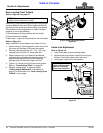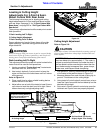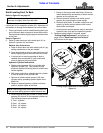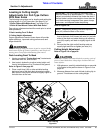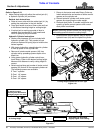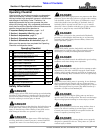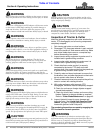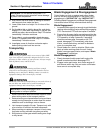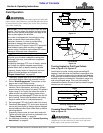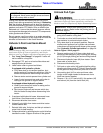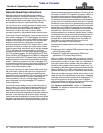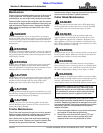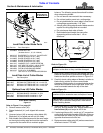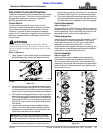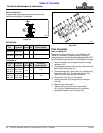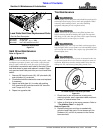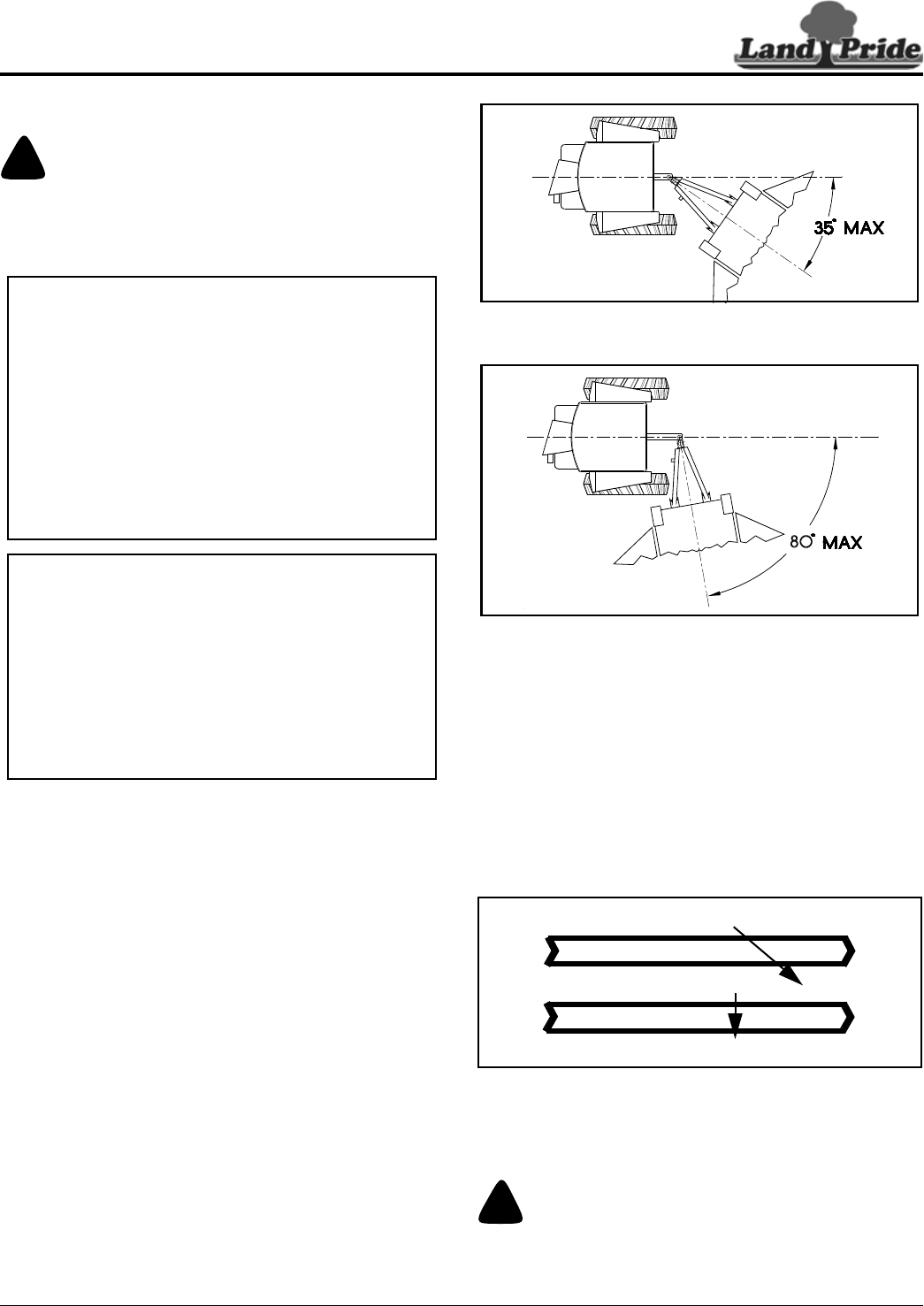
40
Section 4: Operating Instructions
RCF3696, RCFM3696, RCF3610, & RCFM3610 Rotary Cutters 326-600M
12/15/15
Table of Contents
Field Operation
!
WARNING
Clear area to be cut of debris and other unforeseen removable
objects before cutting. Mark any potential hazards that cannot
be removed such as tree stumps, post, rocks, holes, and drop-
offs with a visible flag.
1. Thoroughly inspect area to be cut for debris and
unforeseen objects. Mark any potential hazards.
2. Follow “Blade Engagement” instructions on this
page to start cutter blades turning.
3. Optimum ground speed depends on density of
material, tractor horsepower, and terrain. Always
operate tractor at the cutter’s full-rated PTO speed in
a gear range (2 to 5 mph) that allows the cutter to
make smooth cuts without lugging tractor down.
4. Stop traveling and disengage PTO after the first 50
feet of cutting. Check cutter levelness and cutting
height to make certain it is adjusted properly.
5. Do not engage PTO with 3-point cutter fully raised.
6. Periodically disengage PTO, shut tractor engine off,
remove key, and check for foreign objects wrapped
around blade spindles. Block cutter deck up before
removing objects.
7. Frequently inspect cutter for loose bolts and nuts.
Tighten all loose bolts and nuts as indicated in the
“Torque Values Chart” on page 56.
8. For additional information, see “General Operating
Instructions” on page 42.
IMPORTANT: Do not back pull-type cutter into solid
objects. The joint where the tongue is pinned to the
deck will pivot upward causing the front edge of the
deck to press against the driveline.
Your cutter is equipped with free swinging cutting
blades to reduce shock loads when striking
obstacles. However, it is best to avoid striking
obstacles to extend cutter and blade life.
Maintain correct PTO speed. Loss of PTO speed will
allow blades to swing back resulting in ragged,
uneven cutting. Excessive engine speed will cause
damage to the power train components.
NOTE: Do not cut in wet conditions. Wet material
will build up on the deck underside creating poor
discharge, high wear, and additional horsepower
consumption.
Periodically disengage PTO, turn off tractor, remove
key & check for objects wrapped around blade
spindle. Block deck up before removing objects.
Frequently inspect cutter for loose bolts and nuts.
Tighten all loose hardware as indicated in the
“Torque Values Chart” on page 56.
Conventional U-Joint Driveline
Figure 4-1
CV Driveline
Figure 4-2
Turning Angles for Pull-Type Cutters
Refer to Figure 4-1 & Figure 4-2:
Avoid tractor-to-cutter turning angles exceeding 35
degrees if main driveline is a standard conventional drive
shaft. The turning angle may be increased to 80 degrees
if equipped with a constant velocity driveline shaft. These
extreme angles are intended for intermittent usage only
and not prolonged usage. Plan your field cutting to
minimize the number of turns as well as extreme angles
where turns are necessary.
Crossing Steep Ditches and Banks
Figure 4-3
Crossing Steep Ditches & Banks
Refer to Figure 4-3:
!
WARNING
Damage to the tractor’s PTO components and/or driveline
components can cause driveline to come loose and cause
bodily injury to the operator and others.
11934
20795
Ditch / Bank
Wrong
Right
Ditch / Bank



